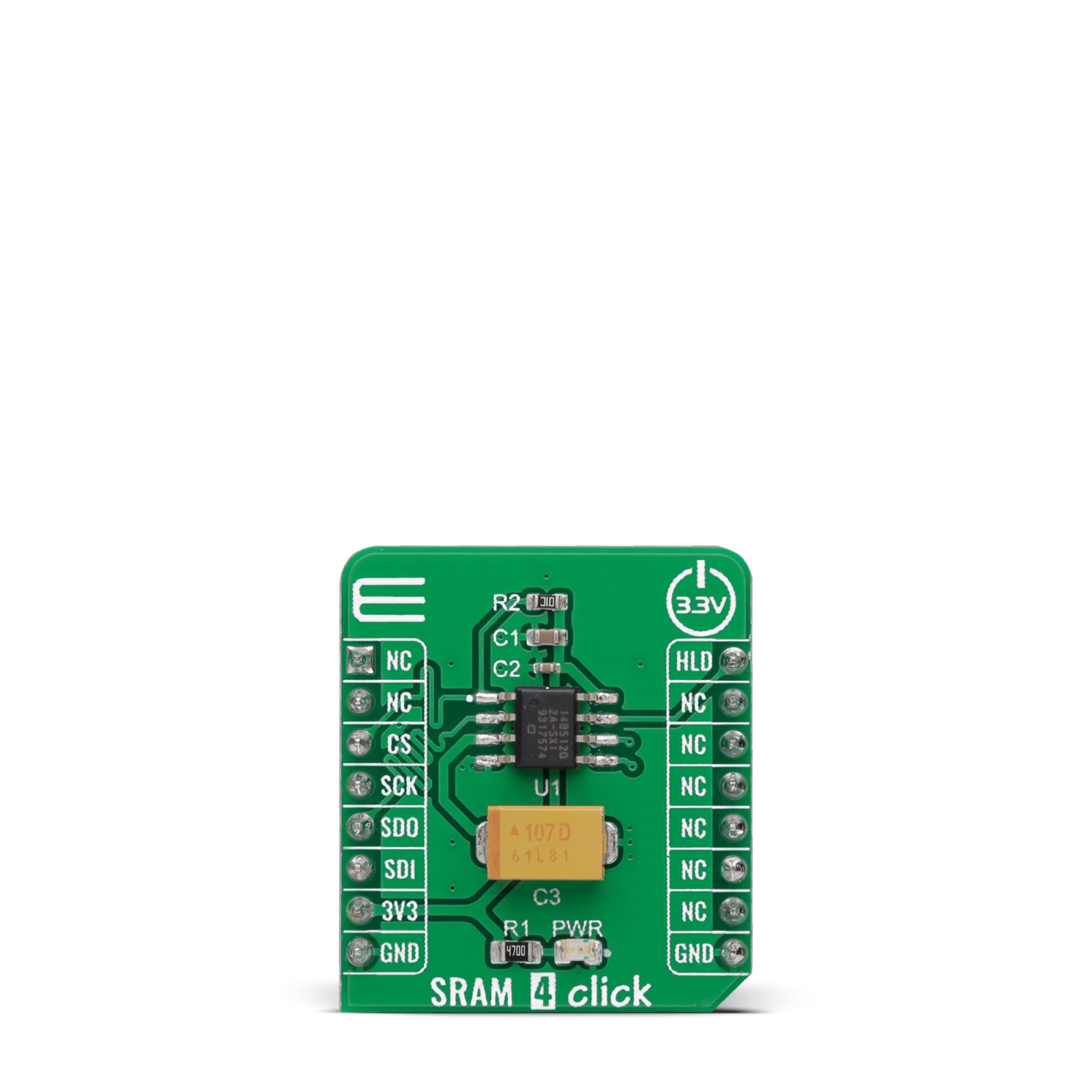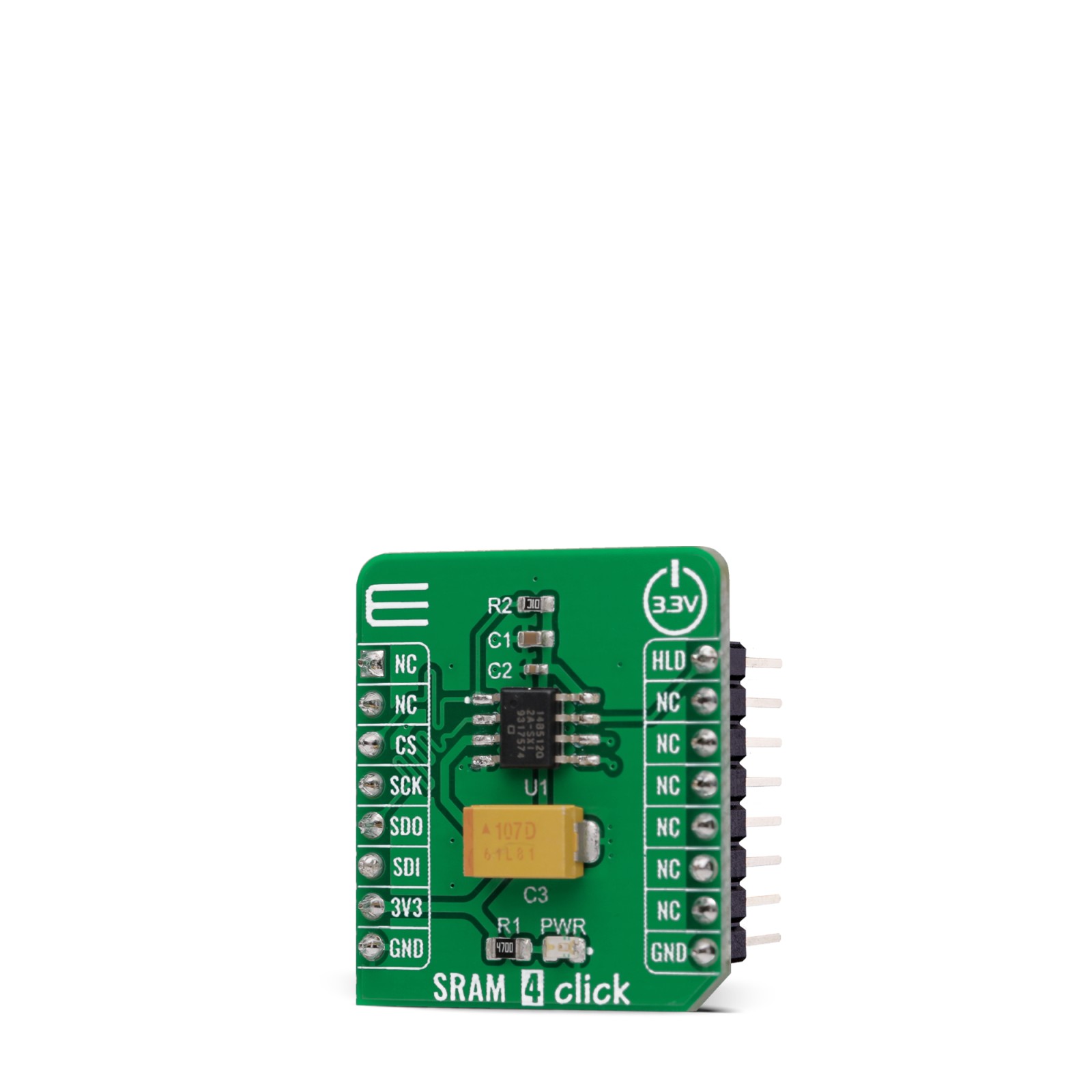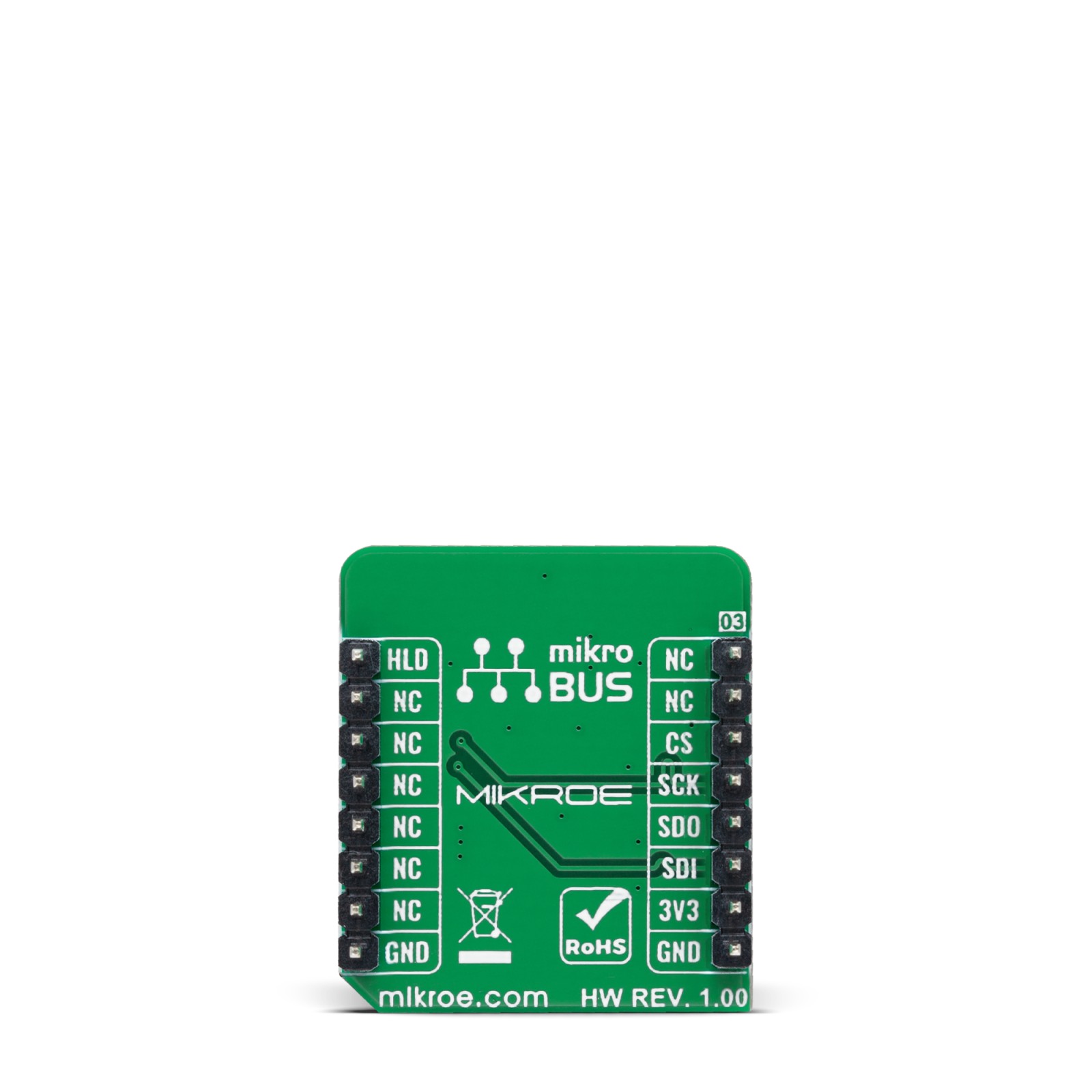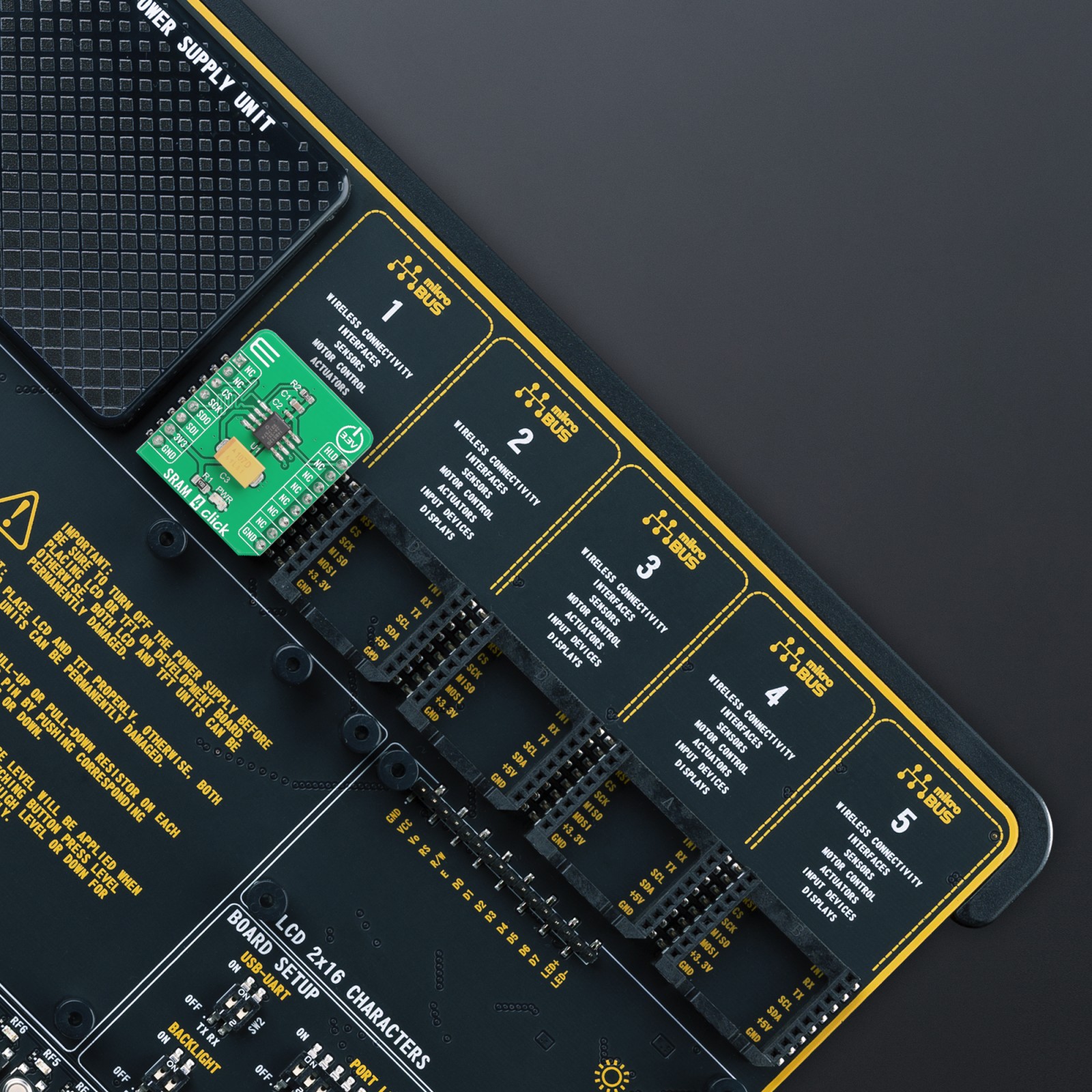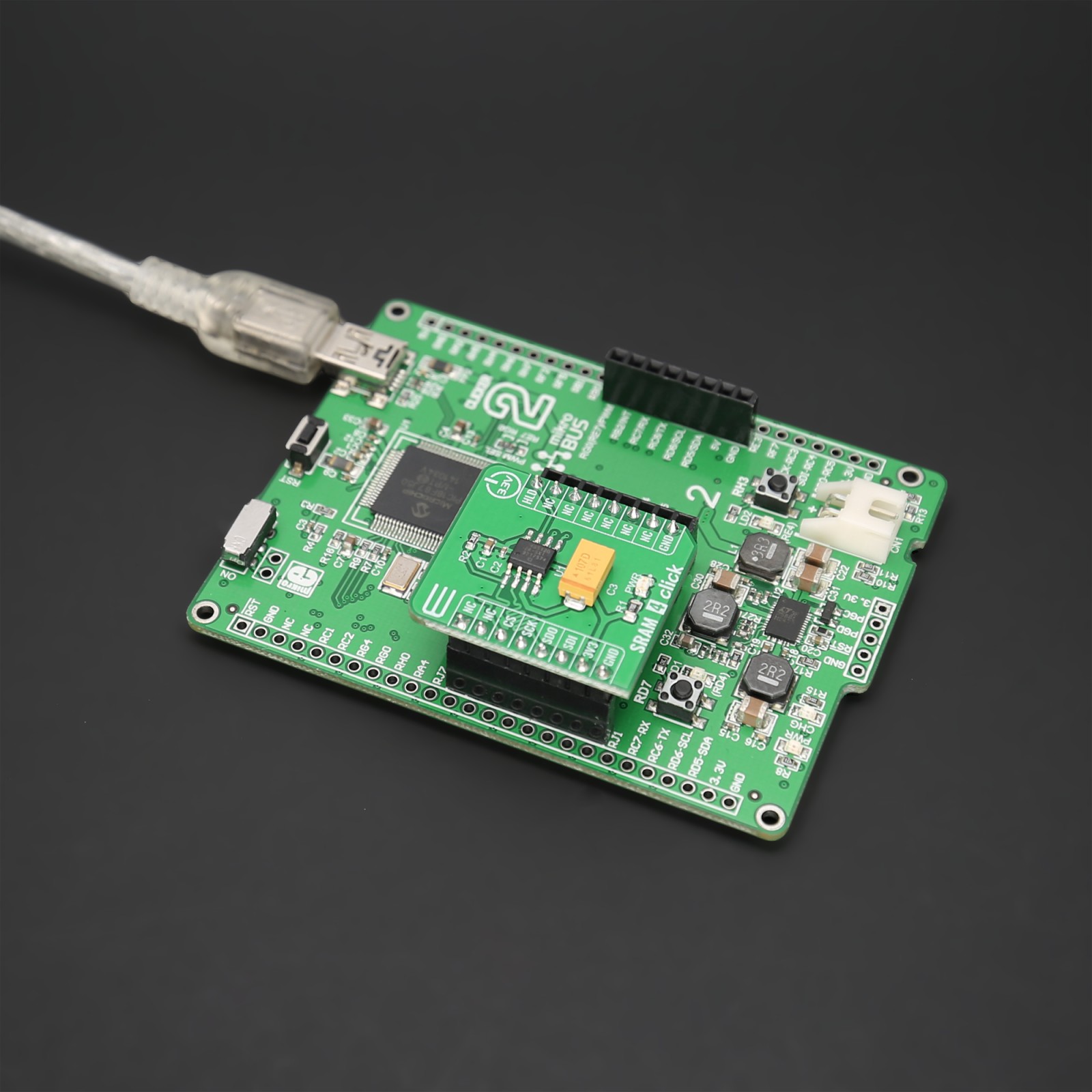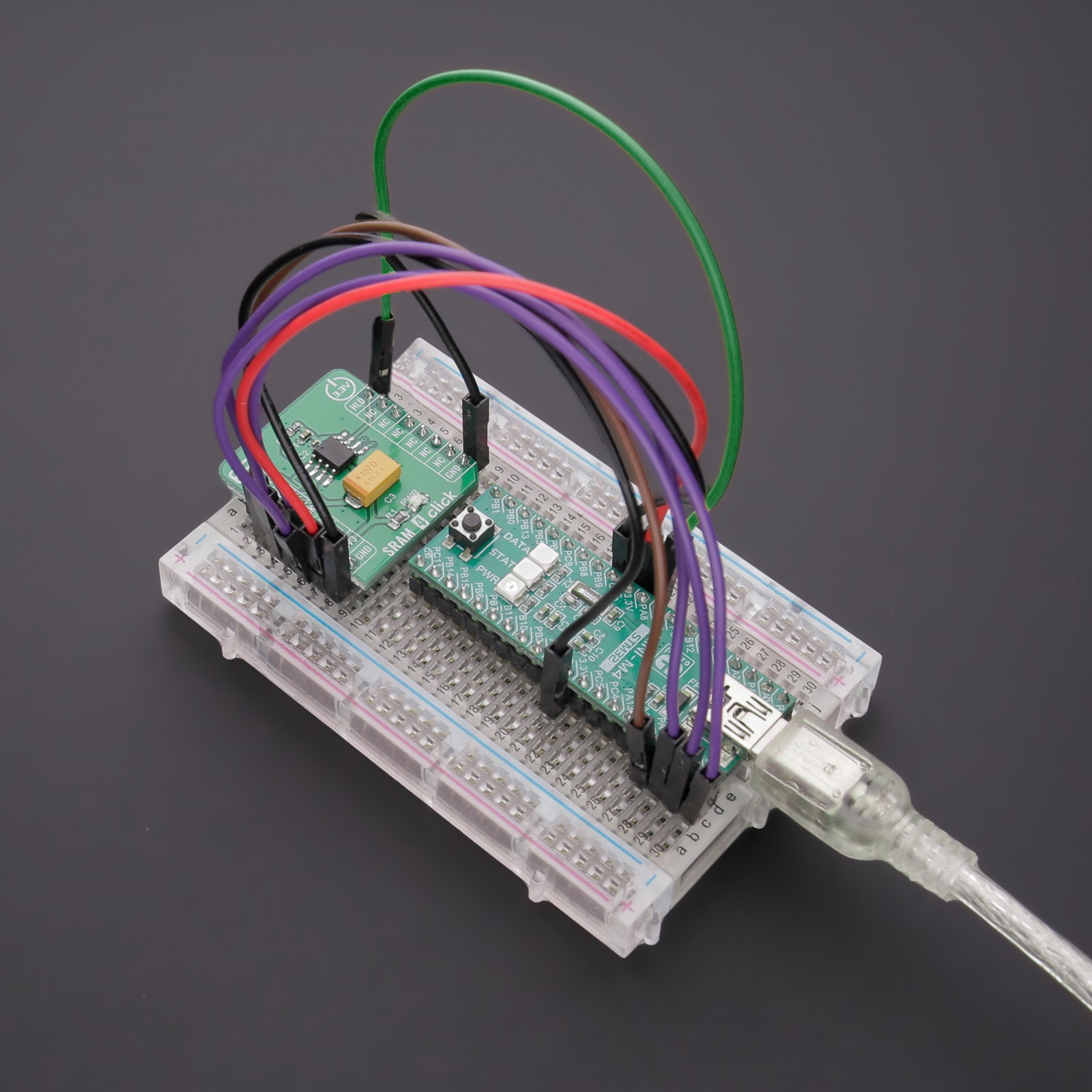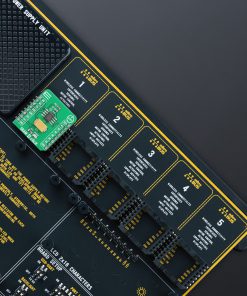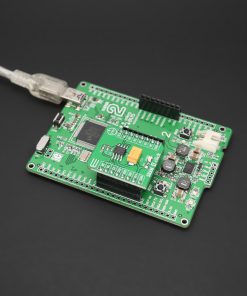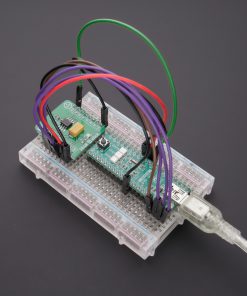Subtotal: R2,750.00
SRAM 4 Click
R650.00 ex. VAT
SRAM 4 Click is a compact add-on board that contains highly reliable nonvolatile memory. This board features the CY14B512Q, a 512Kbit SRAM with a nonvolatile element in each memory cell from Infineon, now part of Infineon. The embedded nonvolatile elements incorporate the QuantumTrap technology, with the entire memory internally organized as 64K words of 8 bits each. The SRAM provides infinite read and writes cycles, more precisely, one million data storage cycles with data retention of 20 years. Data transfer, initiated by the user through SPI commands, from SRAM to the nonvolatile elements automatically occurs at Power-Down. On the other hand, data is restored to the SRAM from the nonvolatile memory during the Power-Up. This Click board™ is suitable for all applications requiring fast access, high reliability of stored data, and unlimited endurance.
SRAM 4 Click is supported by a mikroSDK compliant library, which includes functions that simplify software development. This Click board™ comes as a fully tested product, ready to be used on a system equipped with the mikroBUS™ socket.
Stock: Lead-time applicable.
| 5+ | R617.50 |
| 10+ | R585.00 |
| 15+ | R552.50 |
| 20+ | R531.70 |

 GSM/GNSS Click
GSM/GNSS Click  GPS Click
GPS Click 